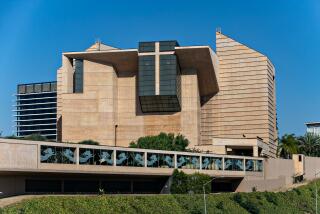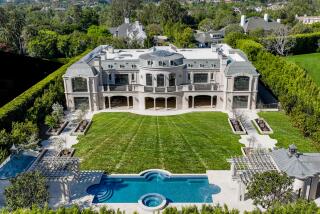Cardinal’s Mansion May Pay Suit Debt
- Share via
CHICAGO — Cardinal Francis George has proposed selling the landmark mansion that archbishops here have called home for more than a century, with some of the profits perhaps going to pay legal fees in the scandal over sexual abuse by priests.
George pitched the idea on the eve of meetings called at parishes across the city, where Roman Catholics were invited to speak out on what they feel about how the church has been handling the torrent of revelations regarding abuse by priests--and the apparent attempts by church leaders to cover it up.
The three-story red-brick home sits on a sprawling half-block lot in the Gold Coast, one of Chicago’s most expensive neighborhoods. With elaborate landscaping, detailed woodwork and 19 chimneys, it could fetch upward of $20 million, real estate agents estimate.
Speaking of the church’s growing legal fees and settlement costs, George said: “If the money is needed, that would be a convenient place to look for it.”
Long uncomfortable with the splendor of the mansion, according to local church officials, George told archdiocese leaders that the main reason they should consider selling is that they could use the money for more important things, such as the operation of financially strapped parishes--and to remind themselves of the priestly ideals of simplicity and austerity.
“How do you live in a way that appears simpler when living in that house?” he asked a gathering earlier this week.
Some Catholics for years have called on the archdiocese to sell the property. In the 1970s and ‘80s, groups made concerted efforts to persuade two of George’s predecessors--Cardinal John Cody and Cardinal Joseph Bernardin--to sell, even as others pleaded with them to retain the property.
The conflicting agendas are sure to surface again if the archdiocese moves forward with what is, for the time being, only a proposal.
Preservationists note that Pope John II once stayed there, as did President Franklin D. Roosevelt. And they remind would-be buyers that the city’s Commission on Landmarks in 1975 designated the site one of historic significance. That means the grounds and building could not be dramatically altered without a green light from the commission.
So any buyer would face difficulties in acquiring and reworking the property. But there is an enormous potential payoff as well.
Owners of other Chicago buildings that once were protected as landmarks have convinced the commission to let them redevelop. Hugh Hefner’s first Playboy mansion, a building that dates to 1889, is now a condominium complex.
More to Read
Sign up for Essential California
The most important California stories and recommendations in your inbox every morning.
You may occasionally receive promotional content from the Los Angeles Times.










